
Home Page |
History |
Commercial Vineyards |
CompetitionNewsInformation |

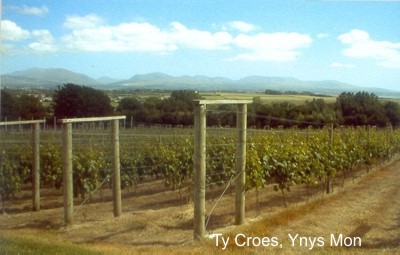  |
Wine making in WalesIn Wales, the Marquis of Bute revived the industry when he planted at Castell Coch in 1895. Gamay Noir was the main grape planted. After a series of poor years, and WW1, the vines were grubbed up in 1920. The revival in Wales came in the 1960s. Dr Idris Thomas planted at Llanarth near Newquay in 1964 and Wing-Commander Mathias at Lamphey Court in Pembrokeshire soon afterwards. The latter failed,but the Llanarch vineyard, names Wern Dêg survived into the C21st. It never produced a lot of wine. Early crops, made by the Merrydown Wine Company in Sussex, ammounted to about 70 bottles a year. However, by 2000, it was producing about 800 bottles (including sparklng wine) made by Three Choirs. It has now closed, to be replaced by a caravan park. John Bevan planted Madeleine Angevine, Seyval and Muller Thurgau at Croffta in 1975. Glyndwr was first planted at Cowbridge in Glamorgan in 1983, and still produces sparkling wine. Nearby Llanerch was started in 1986 by the Andrews, again with Seyval, Huxelrebe, Reichensteiner, Kernling and Triomph d'Alsace. It has now grown into a major hotel complex. In Monmouthmouthshire, Monnow Valley began in 1978, but sadly, has now closed. Brecon Court at Llansoy was also developed in the 1960s, and in 1996, was producing a sparkling wine made of Seyval Blanc and Pinot Gris. It too appears to have been grubbed up after briefly, being taken over by Monnow Valley. However, nearby Tintern Parva (now Parva Farm) continues to thrive.Offas Vineyard was near to where White Castle now is, and Pant Teg was the amateur vineyard of Kynric Lewis at Llysfaen, just north of Cardiff. His label was, I believe, painted by Sir Kyffin Williams, and is one of the few labels in Welsh (see below) Vineyards further North Wales were slower to establish. Martin Lewis planted at Ffynnon Las (Cerdigeon) in 1988 and Tom Barlow on Ynys Mon in 1991. Martin Seed successfully grew classic varieties under polytunnels at Worthenbury near Wrexham, and Penarth Vineyard has grown them near Newtown since 1999. Since the turn of the C20th, there has been far more planting, with, currently, about 40 hectares. Varieties too have changed, as new, disease and climate adapting varieties have been developed. Now, the main ones grown are Solaris, Bacchus Rondo and Regent. The growing number of vineyards, and long distances involved getting to vineyard association meetings in the South West or Mercia, resulted in the main vneyards setting up their own association. This is open to all growers in Wales. Application is via the national body, now WINEGB. via their website
 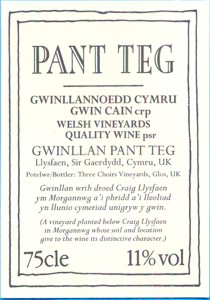 |
EARLY WELSH VINEYARD LABELS | |||
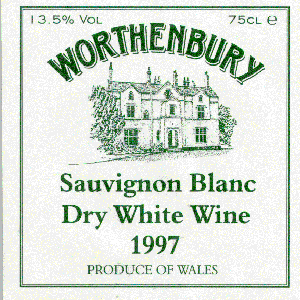 | 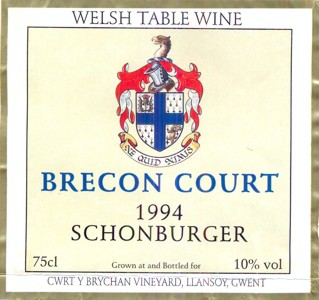 | 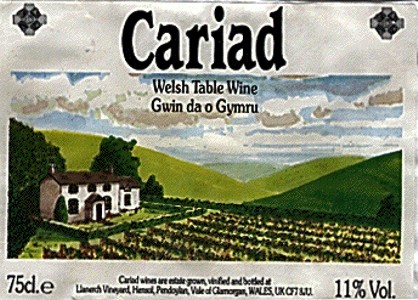 | |
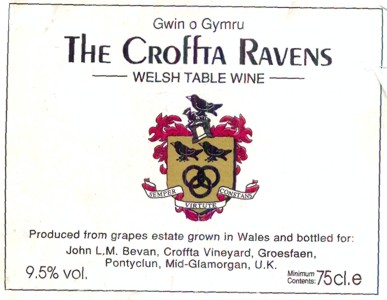 | 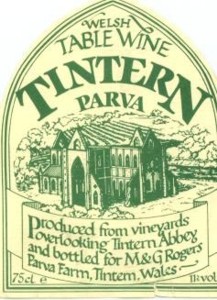 | 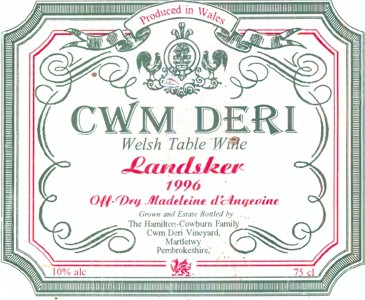 | |
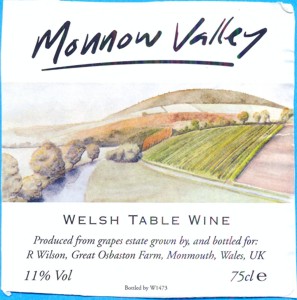 | 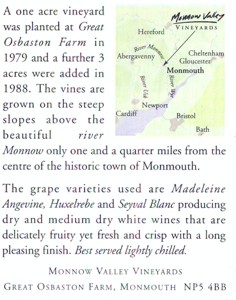 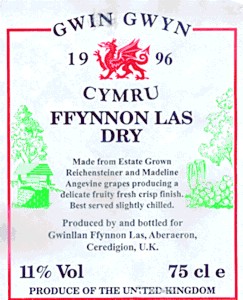 | ||
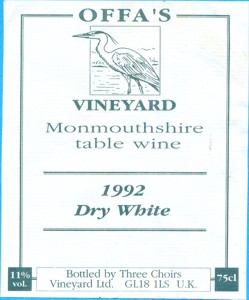 | 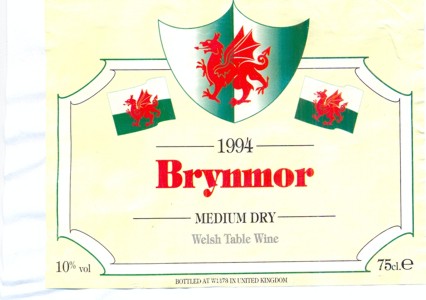 | 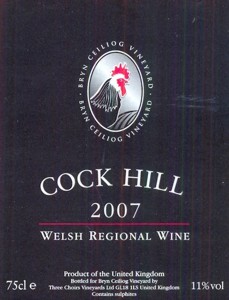 | |
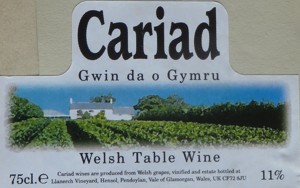 | 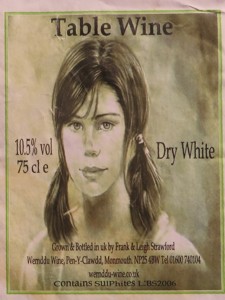 | 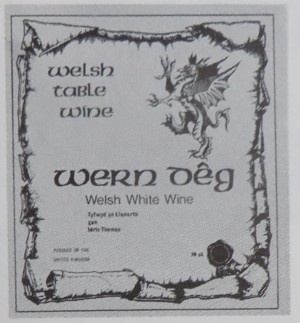 | |
Go back to top of file